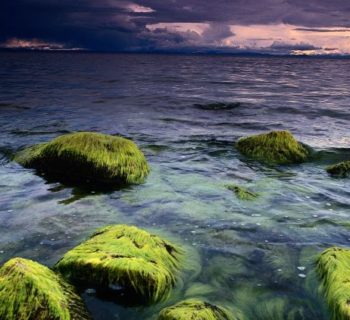With my previous post I started blogging on historical anniversaries related to the date 27th of January. My first blog focused on remembering the victims of holocaust. In Germany the date of the liberation of the Nazi concentration camp Auschwitz-Birkenau (27.1.1945) is the Day of Remembering of the Victims of the Nazi Regime (Gedenkstag der Opfer des NS-Regimes). With this post I discussed the importance of such remembering in the present times when antisemitism, xenophobia and racism tend to creep forward in the social media and in the everyday language. In this respect I brought forward contributions of German media with emphasis on learning lessons from the dark times. In a similar way I would like to deal with the 100th anniversary of the beginning of the Finnish civil war (27.1.1918).
The Finnish civil war - what was it all about?
Last year and the year before I was pleased to blog on the special year in the Finnish history - the preparations for the 100th anniversary of the Finnish Independence Day - the day when the Finnish parliament approved the Independence Declaration. Shortly afterwards the independence was recognised by the revolutionary government of Russia, led by the Bolsheviks and V.I. Lenin. This was celebrated by all political groupings in Finland. BUT the political and social life was in turmoil and the conflicts escalated into a civil war.
Nowadays the studies in the Finnish history, complemented by investigative journalism, have provided much information on the developments that led to the national tragedy. Paradoxically, Finland had profited of the presence of Russian soldiers and navy during the World War I (whilst Finnish people were not recruited to the Russian army). The fortifying works and the supply of army had provided income and employment for Finnish people. When Russia collapsed in military and economic terms, this was a heavy blow to the Finnish economy - and suddenly the condition of working people became worse. At the same time the police forces (maintained by the Russian government) were abolished and this caused immense problems. As a consequence, both the bourgeois parties and the labour movement started to create their own guards - which then started to live a life of their own. Also, with the common goal - to gain independence - there were controversies between the political parties: Who is really promoting it and who is collaborating with the Russian elite?
In January 1918 the bourgeois-led Finnish government declared the 'white guard' as the government troops and ordered the disarmament of the remaining Russian troops and of the 'red guard'. At the same time the government left Helsinki and reassembled in the city of Vaasa. The disarmament order led to fighting and to the decision of the red guard of Helsinki to start an armed resistance. This was followed at different parts of the country - but soon it became clear that the red guards dominated mainly the southern (and more industrialised) parts of Finland whilst the white guards dominated the central and northern areas. In March and April the white guards with better military leadership and better resources got the upper hand. In the crucial battle of Tampere the military strength of the red guard collapsed. And the subsequent invasion of German troops to the Helsinki area strengthened the final offensives of the white guard.
As usual, transition from civil war to peace and to normality is not an easy process. And in Finland in the year 1918 this transition was far from peaceful. Already during the civil war there had been numerous atrocities in different parts of the country. Now, after the military victory, the revenge was merciless. Mass executions, catastrophic circumstances at prisoner camps and an atmosphere of mistrust and discrimination overshadowed the whole year. However, the fact that Germany lost the World War I, gave rise to changes in government and brought up more reconciliatory tendencies into government policies. Yet, the wounds were deep and it took long to heal them.
Coming into terms with the experiences of the civil war - how has that happened?
In the light of the above it is understandable that the political climate remained very polarised through decades. From 1939 to 1945 the involvement of Finland in the World War II put the defence of the independence and the survival struggle of the Finnish people on top of everything else. In the post-war reconstruction there were tendencies towards consensus and towards polarisation. However, the recovery of the damages and the resettlement of a large population evacuated from the areas that were lost to Soviet Union - all this had the priority.
Once the reconstruction got further, there was firstly a need to deal with the more recent experiences of the World War II. On the one hand this happened via 'war stories', in which the bravery of Finns was celebrated. But on the other hand another kind of reflective literature emerged - something similar to Tolstoy's 'War and Peace' or to Hemingway's 'To whom the bells toll'. The leading author of this wave was Väinö Linna with his taboo-breaking novel "Tuntematon sotilas" (The unknown soldier), published in 1954. As Linna himself said, he wanted to value the Finnish soldiers and their survival struggle but not the war itself. And as a result, there was a highly controversial debate, whether he did justice to his country and the struggle. At the end, he gained huge popularity and the film, based on his novel, is nowadays part of the national identity of the post-war Finland.
After this experience the country was ready to deal with the older wounds. And again it was Väinö Linna, who opened the discussion with his novel trilogy "Täällä Pohjantähden alla" (Under the North Star) in the 1960s. In this trilogy he reconstructs the Finnish history before the independence, the critical years of the independence movement and of the civil war, the tensed period of the 1920s an 1930s, the years of World War II and of the post-war recovery. The venue is the rural village of Pentinkulma that serves as the focal point for presenting what happened and what the local people thought of it. Given the success of his previous novel, Linna presented a new perspective to the civil war and to the years after. With the help of his trilogy - and the films based on it - the new generations learned to overcome the 'white' and the 'red' myths of the civil war. It became apparent that it was not a war between 'the good' and 'the bad' but both sides had blood in their hands. And it became apparent that the years after the civil war kept the suspicion and tension alive. In the long run, the nation learned to leave the hatred behind - although not much was done to find the truth and to ease the reconciliation.
What has happened later on - until the current anniversary?
In the decades after the 1960s the Finnish economy became prosperous, the Finnish society was adopting a variant of a welfare state -policy and the political life was overcoming polarisations. Thus, the antagonisms of the 1918 were now longer lived as a part of the actual political culture. Yet, it was only in the 1990s and after the year 2000 when professional historians took major efforts to clarify in depth, what all happened in the year 1918. More detailed studies were published on different aspects of the civil war and a comprehensive database was gathered on the victims - included the ones killed in action, by atrocities, by executions, by starvation or diseases in the prison camps.
Moreover, this also brought into picture new kinds of novels that researched the fates of particular personalities or - in a bigger picture - the role of women during the national tragedy. And this gave rise to theatre pieces that presented these aspects in different parts of Finland. Finally, with the help of the Finnish broadcasting corporation YLE, a new campaign for collecting memories of the tragic years - either those of eye witnesses or those of their children - has led to a richer picture of the dark period.
On top of this, the 100th anniversary (of the beginning of the civil war) coincided with the presidential election in Finland. It was remarkable to see that the candidates of different parties could discuss the tragedy of the past in an open way - and it appeared that the relatives of the candidates had been on different sides. Yet, in the present date Finland this didn't trigger attempts to replay the old antagonisms. Instead, the discussion took the course towards learning the lessons from the difficult past. The conflicts of interest and different world views should never bring the people to such a situation again.
---
I guess this is enough of these historical anniversaries. I will now return to my usual themes.
More blogs to come ...








